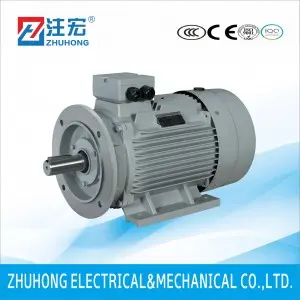One, minor repair
Minor repairs generally refer to on-site maintenance work without disassembling the motor. Its general content is:
① Wipe the motor casing, check and tighten loose bolts, and partially touch up the outer surface;
② Remove the outer bearing cover and check the grease. If oil is missing, replenish it in time;
③ Grind brushes, collecting rings or commutators, replace brushes, and repair short-circuit devices or commutation devices;
④ Check whether the wiring terminals are in poor contact, and repair the outlet box and fan;
⑤Measure the air gap (for protected motors), insulation resistance and test machine.
Two, overhaul
Overhaul refers to repair work that requires the motor to be disassembled or removed from its foundation. Its general content is:
①All minor repair items;
②Clean the windings and repair the iron core;
③Repair welding of rotor guide bars and replace bearings;
④ Partial repair, rewinding or modified repair of windings;
⑤ Work that must be done to eliminate various defects discovered during daily recording and dismantling and repair processes.
After overhaul, its original structure and performance should be fully restored. The specific requirements are as follows.
① Operation is normal.
a. The output meets the nameplate requirements.
b. The temperature rise of each part of the motor is within the allowable range.
c. There is basically no spark or only some small sparks when the collector ring or commutator is running.
d. The motor sound is normal and there is no big vibration.
②The structure is intact and all parts are intact.
a. There is a nameplate that meets the regulations on the shell.
b. The windings, iron cores, and slot wedges are free from aging, looseness, discoloration, etc.
c. The bearings do not leak oil, and the machine base, end cover and fan are intact.
d. The surface is clean and the bolts are fully tightened.
③The technical information is complete and accurate, and there are maintenance and test records.
Post time: Jan-23-2024








